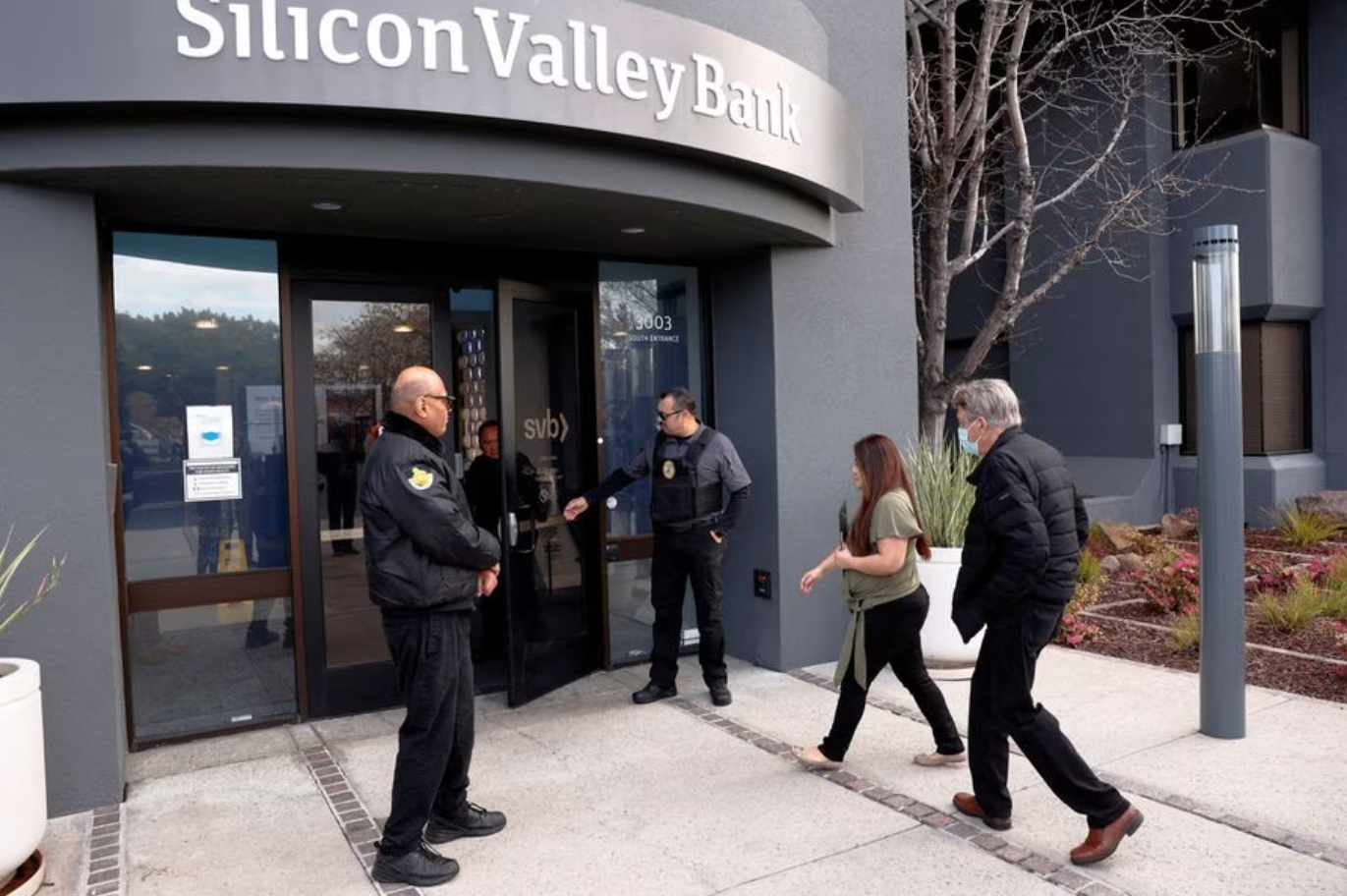On Wednesday, March 8, Silicon Valley Bank (SVB), a bank that provided financial services to about half of the U.S. tech startup ecosystem and a sizeable group of this industry in Latin America, announced that it needed $2 billion of new capital after losing $1.8 billion in the sale of a portfolio of U.S. Treasury bonds and mortgage-backed securities (MBS). That same night, Moody’s downgraded its rating to speculative grade. The news spread like wildfire on Twitter and thus came the final blow to SVB. Its depositors attempted to withdraw $42 billion in a single day, producing the second-largest banking collapse in U.S. history.
What went so wrong?
The story begins during the venture capital (VC) boom of the late 2020s and 2021s, when tech startups around the world were flush with cash from generous investment rounds. In the U.S., much of this abundant liquidity flow ended up in deposits inside SVB. And SVB did what every bank should do: transform those funds into investments that generate an attractive return. An obvious choice would have been to place loans, as a traditional commercial bank would do, but SVB’s clients already had all their funding needs to be covered by VC money.
Faced with these particular characteristics of its pool of clients, the bank finally decided to concentrate the majority of its assets on instruments with low credit risk but offering an acceptable return. The chosen ones? U.S. Treasury bonds and mortgage-backed securities (MBS). The problem? The high price sensitivity of these instruments to increases in market rates, coupled with the concentration of SVB’s depositor base in the Tech startups they served, most of which had deposits well above $250,000 covered by the FDIC (the corporation that manages the U.S. deposit insurance fund), making them a very unstable source of funding.
But, of course, in 2021, when “everything that went up didn’t necessarily have to come down,” who cared? Remember, those were the years of virtually zero interest rates, ridiculously lax due diligence standards (investigation of a company before the decision to invest in it), and genius gamers of MIT, Princeton, and Harvard evangelizing the masses on the goodness of blockchain and decentralized finance. Never was the dream of becoming a Unicorn so close. VC-funded startups that achieve a valuation of $1 billion or more are known as “Unicorns”.
However, things changed dramatically on the afternoon of Wednesday, March 16, 2022, when Jerome Powell, chairman of the Fed, stood firm in front of the TV cameras at a press conference and announced the end of expansionary monetary policy in the United States. This new context significantly increased the cost of capital in the last months of 2022 and so far in 2023, hitting Tech industry valuations hard. Moreover, if we add to this the heavy losses of the largest VC funds during 2022 (think Softbank, Sequoia Capital, and Tiger Global), as well as last year’s FTX scandal, we are left with a group of nervous entrepreneurs who, seeing the liquidity they thought would last forever disappear, could no longer maintain the same levels of cash in their deposit accounts.
The distressed sale described at the beginning responded to the bank’s need to cope with this unusual increase in demand for deposits. The losses from this action would lead to the second key moment in SVB’s drama: the panic of Thursday, March 9, and the withdrawal of the $42 billion. Ultimately, this would trigger the tragic outcome on Friday the 10th, with the takeover of SVB by California financial regulators and then by the FDIC.
A gray bird and two liquidity ratios
The author of the book “The Black Swan”, Nassim Taleb, would say that the SVB crash was a gray swan, an extreme, low probability, high impact event but one that, unlike its first cousin the black swan, could have been anticipated. I sense that the FED and company would not be too happy to be confronted with this idea and would prefer to keep the bird’s color a dense jet black.
The truth is, beyond the undeniable incompetence in SVB’s management, it is fair to say that the regulators chose to ignore the huge gray swan in front of their noses. In other words, at this stage of the game where Dodd-Frank Act (the series of measures that reformed U.S. financial regulation after the 2008-2009 financial crisis) and Basel III (the set of reforms issued by the Basel Committee in Switzerland to strengthen the stability of banking systems around the world) reign supreme, regulators should have been able to identify SVB’s liquidity problems early on.
In fact, allow me the audacity to say this: first, none of this should have happened! The Basel III standards have two liquidity limits that emerged in the wake of the financial crisis that would have prevented SVB from going kaput: the Liquidity Coverage Ratio (LCR) and the Net Stable Funding Ratio (NSFR), both of which are included in the U.S. financial regulation (Dodd-Frank) but only for entities considered systemically important. In simple terms, these ratios increase the resilience of financial institutions to abrupt outflows of their short-term funding sources such as deposits. In addition, it requires that banks have diversified and stable funding sources to face potential liquidity stress in the medium and long term.
Now, the $42 billion question is: Why is the 16th largest U.S. bank in terms of asset size not considered systemic for regulatory purposes? But more important than that: will there be a new regulatory adjustment inspired by SVB?
Fortunately, in Latin America, the traumas of a tumultuous past make us Latinos a particularly cautious group, perhaps not in matters of the heart but certainly in matters of financial stability. We will hardly find cases in our neighborhood where these two important liquidity ratios are not widely applied, even in countries that are not official members of the Basel Committee such as Peru, Chile, and Colombia. This should put our minds at ease (for now).
*Translated from Spanish by Janaína Ruviaro da Silva













